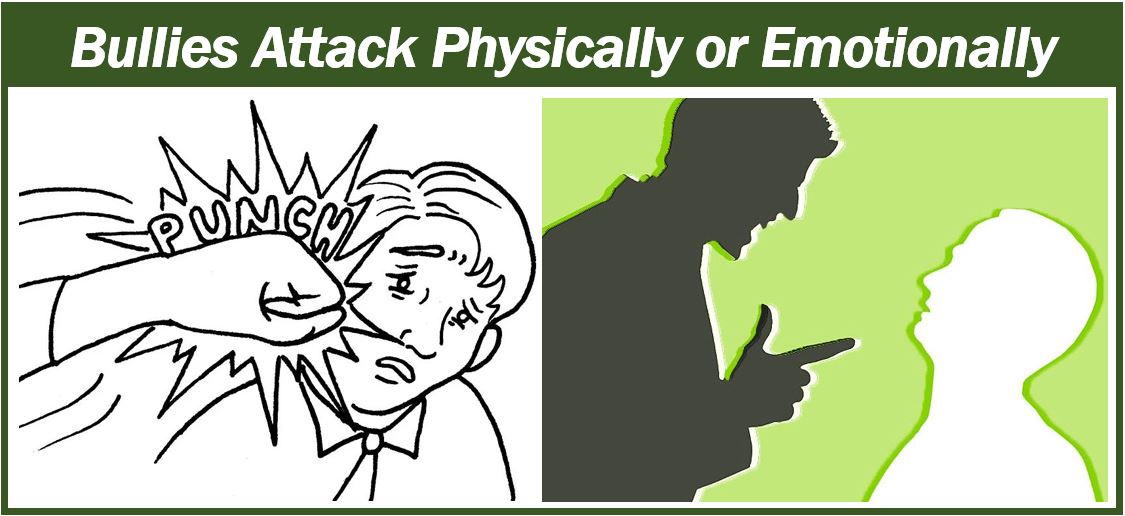A Bully is somebody who seeks to intimidate or harm people they see as vulnerable, i.e., easy prey. The behavior, which is intended to hurt others either physically or emotionally, is deliberate and habitual. The bully may target individuals because of their physical appearance, race, disability, religion, academic performance, sexual orientation, gender, voice, etc.

The perpetrator may use threatening behavior, call people names, physically assault them, humiliate them socially, or take part in cyberbullying.
Bullying is bad for business! Studies have shown that environments with prevalent bullying behaviors often experience a decrease in overall group morale and productivity.
Workplace bully
A workplace bully targets people at work so that they feel scared, intimidated, embarrassed, humiliated, or offended. We refer to their actions either as bullying or harassment.
The following are some examples of harassment or bullying in the workplace:
- Treating somebody unfairly.
- Spreading false and malicious rumors.
- Regularly undermining an individual.
- Regularly picking on somebody.
- Unfairly denying somebody promotion opportunities.
- Unfairly denying a person training opportunities.
- Habitually forcing oneself on an employee or touching them inappropriately.

What can an employee do about a bully?
If you are the victim of a bully at work, you should initially try to deal with the problem informally. If this is not possible, talk to your:
- Immediate boss.
- Somebody in the HR department.
- A representative of your trade union, if you belong to one.
If this gets you nowhere, make a formal complaint following the grievance procedures laid down by your employer. Your final option is to take legal action.
What is cyberbullying?

Today, a bully has more options for hurting other people than his or her counterparts before the advent of the Internet. They can bully or harass people electronically, i.e., online. We call this cyberbullying or cyberharassment.
Cyberbullying has become a serious problem globally, especially among adolescents. Victims can become angry, frustrated, scared, and even clinically depressed.
Bullying can have long-term psychological effects, including post-traumatic stress disorder (PTSD), which can persist well into adulthood for victims
Internet trolling, a type of cyberbullying, is common on social media and online gaming platforms. A troll upsets people or initiates quarrels online to sow discord or distract by posting malicious messages in a chat room, blog, newsgroup, forum, or social media website. The verb is ‘to troll (someone).’
The United States, United Kingdom, and several other nations today have specific cyberbullying laws.
Etymology of bully
Etymology is the study of the origin of words, phrases, and sayings, and how their meanings evolved over time.
The word bully first appeared in the English language in the 1530s. However, at the time it meant “sweetheart,” it was a term of endearment that men or women used. It came from the Dutch word “Boel,” which means “lover, brother.”
In the 17th century, its meaning changed from “fine fellow,” to “blusterer,” and then “harasser of the weak.”
